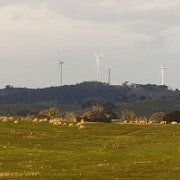Who are the biggest carbon emitters in the NEM?
My recent article about the portfolios producing the most wind production generated a number of comments and questions.
That analysis was compiled because, in the emotive environment of claim and counterclaim with the RET Review underway, it seemed that AGL (in particular) had been painted as all big, bad and dirty (with its significant involvement in wind overlooked). As shown in that analysis, evidence suggests that AGL has also been a large supporter of wind generation.
Attentive readers would have noted that the title to that article was a question, rather than a statement.
Our article did beg another obvious question, framed with the same 'trader portfolios' (see below) in NEM-Review: who have been the largest CO2 emitters, over time. Understandably, this was one of the questions we’ve been asked offline.
Hence we cracked open our NEM-Review analytical software to produce the following trend:
(Note: in this chart we have selected only the 'larger' portfolios, to avoid cluttering the chart. Otherwise there would be a significant number of smaller portfolios – some black, some green – with total carbon emissions bumping down near the bottom of the chart. These portfolios would also show electricity production volumes orders of magnitudes smaller than those portfolios shown above, if we charted them.)
Within NEM-Review it is possible to sort generation capacity by a number of different criteria – for example, by region, fuel type or company – through three different methods:
1) By 'Owner' – which, as the name suggests, is the company or companies that currently own the station. For a new update on the structure of the generation, transmission and distribution sectors of the industry – in the east and west – see the 2014 issue of Power Supply Schematic (now at the printers).
2) By 'Trader' – which incorporates portfolios in terms of the organisations that own the (black) energy produced by the stations. Similarly, the upcoming 2014 update to Power Trading Schematic might help here.
3) By 'Bidder' – which is similar to Trader, but not for Non-Scheduled plant (i.e. a plant that does not bid).
When trending over time, any of these sort-mechanisms is assumed not to have changed in the past. A case in point here is that the AGL Energy 'Trader' portfolio is shown to include Macquarie Generation, and to assume that MacGen had always been part of that AGL portfolio. The same for Mount Piper in Energy Australia's, and Eraring in Origin’s, etc. (See here for more information about the Generator Catalogue'within NEM-Review.)
As can be seen in this chart, the larger AGL portfolio (following the acquisition of MacGen) would – with real data trended backwards over time – represent the largest emitter of carbon emissions in the NEM by a considerable margin. Energy Australia and GDF Suez are shown to be interchanging second and third.
Also notable, in the chart above, is the significant reduction shown for the Stanwell Corporation portfolio. Without looking at the details, we suspect this is likely to have been due to a combination of reduced production volumes for the whole portfolio, and the switch from coal to gas at Swanbank E (to be reversed at the end of the year as the LNG plants come on-stream).
So, here’s the rub: AGL can be seen to be the biggest producer of electricity from wind (and by a considerable margin) – but, at the same time, is also the largest emitter of carbon (by a considerable margin).
What does this mean, then, in a political environment persisting with claim and counter-claim about “greenness” – for instance, with:
1) the recent release of the Greenpeace/TEC Green Electricity Guide.
2) the 'Better Power' campaign launched by – independent? – GetUp. (Note: I must admit being a bit confused, here, as it refers only to Powershop – whereas there are other retailers also supplying renewable power, if that’s what the customer wants – and yet does not read like a paid advertisement. Perhaps one of our readers can explain?)
In the previous article on AGL and wind, we trended AGL’s 'market share' of wind produced (albeit, not as clearly as we would like – some comments indicated the confusion inherent in the measure). For ease of reference this is included here again:
If we did the same with emissions (just AGL’s share of the larger portfolios above) we come up with the following trend:
Comparing the two, we see that AGL’s share of wind production climbed to just above 30 per cent in 2012-13 and 2013-14, while its share of emissions (from large portfolios) with the acquisition of MacGen means that it’s just below 30 per cent (so somewhat lower again as a total share of NEM emissions). Is this a coincidence?
Another notable observation in the chart above is how emissions from these large portfolios did drop in the carbon tax years (2012-13 and 2013-14). However, in some ways this can be seen to be a continuation (perhaps acceleration?) of the trend started in 2008-09 with the start of declining demand.
Paul McArdle is the managing director of Global-Roam, a business that provides computer software that helps users to analyse and understand energy markets
Originally published by Watt Clarity. Reproduced with permission.



















